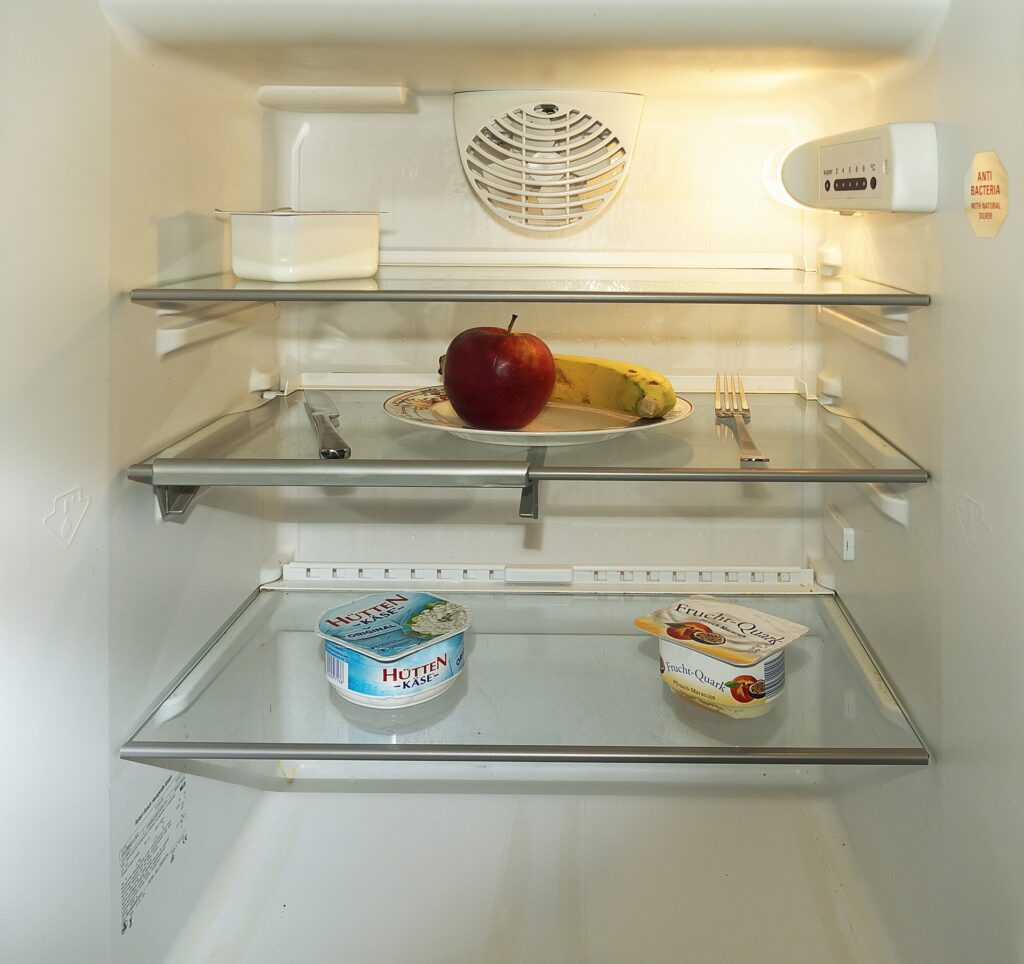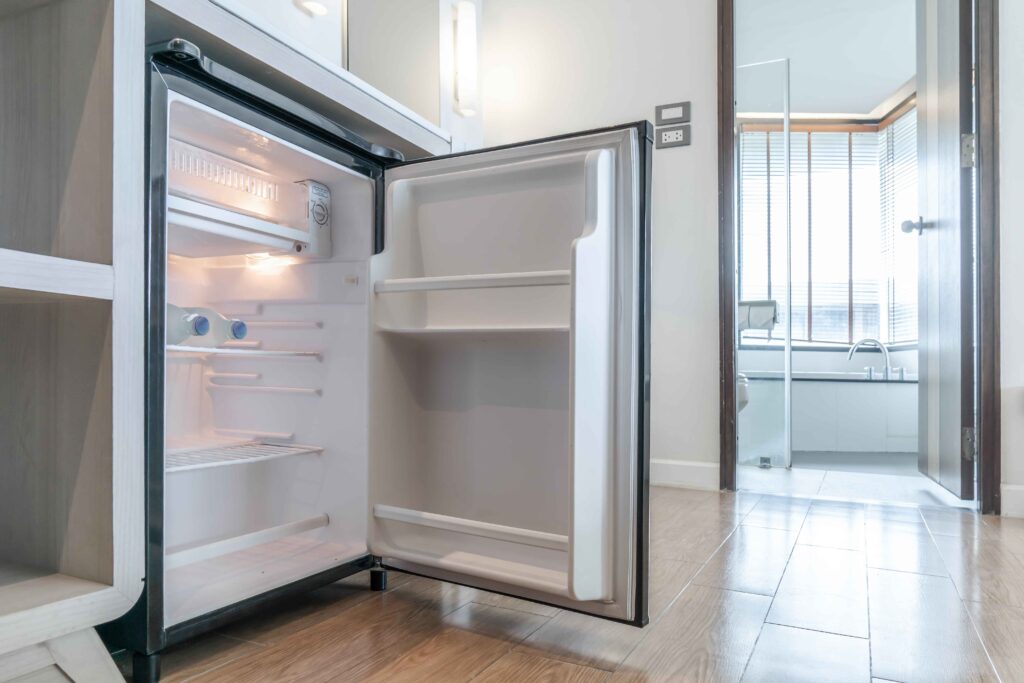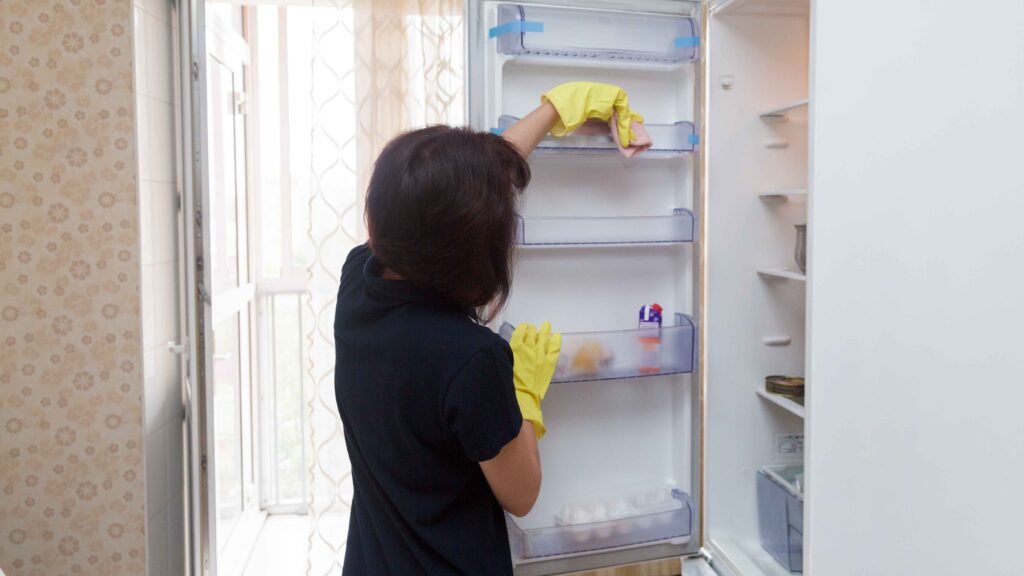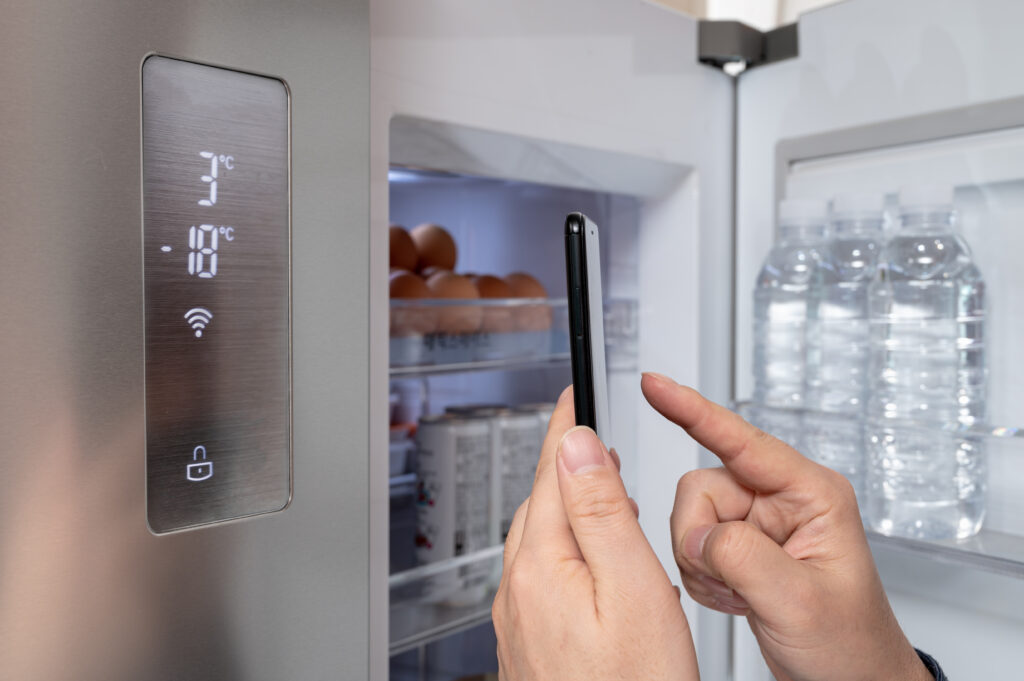Do you struggle with such a frustrating problem as “Why is my Whirlpool refrigerator not cooling?” Your fridge must work right to keep your food fresh. When a Whirlpool fridge doesn’t cool properly, it can disrupt your daily routine and spoil food. This article will explore why the Whirlpool fridge is not cooling and offer practical troubleshooting tips.
Understanding why your Whirlpool fridge isn’t cooling correctly is essential to fix this problem and restore it to peak performance. Let’s examine why your Whirlpool refrigerator might not maintain the desired temperature.
Why is My Whirlpool Refrigerator Not Cooling

When your Whirlpool refrigerator isn’t cooling correctly, it’s essential to identify the problem. Several factors can contribute to a Whirlpool refrigerator not cooling correctly. Here are the most common causes:
1. Insufficient Power Supply or Electrical Issues
Power problems or insufficient power supply can interfere with the refrigerator’s cooling mechanism. Ensure the refrigerator is properly plugged in and the power outlet or circuit breaker functions correctly. A power outage or an electrical fault can disrupt the cooling process.
2. Thermostat Problems
The thermostat plays a vital role in regulating the refrigerator’s temperature. If it malfunctions, the refrigerator can become too cold or too warm depending on how well it controls the cooling. Calibrating and checking the thermostat is essential to ensure it works properly.
3. Dirty Condenser Coils
The condenser coils dissipate heat and regulate the refrigerator’s temperature. When covered in dust, dirt, or debris, they cannot efficiently release heat, resulting in inadequate cooling. Keeping condenser coils clean is vital to maintaining optimal cooling results.
4. Faulty Condenser Fan
The condenser fan plays a crucial role in removing heat from the refrigerator. If it’s not working properly, heat can build up, resulting in insufficient cooling. Check the fan for obstructions or damage, and make sure it runs smoothly.
5. Refrigerant Leakage
The refrigerator uses refrigerant to facilitate the cooling process. A leak in the refrigerant system can reduce cooling efficiency. It’s essential to call a technician if you suspect your refrigerator is leaking refrigerant.
6. Evaporator Fan Malfunction
The evaporator fan circulates cold air throughout the refrigerator, ensuring an even temperature. Misfunctioning of this fan can lead to uneven or no cooling. Unusual noises or inadequate cooling could occur because of the evaporator fan.
7. Blocked Air Vents
Maintaining the desired temperature inside the refrigerator requires proper airflow. Uneven cooling can happen if air vents are blocked, usually from overpacking or incorrect item placement. Provide unrestricted airflow in the refrigerator by arranging items accordingly.
8. Compressor Issues
During refrigeration, the compressor pumps refrigerant through the coils to facilitate cooling. Overheating or mechanical problems with the compressor can result in inadequate cooling. Seek professional assistance as soon as possible if you suspect compressor trouble.
9. Faulty Start Relay
The start relay initiates the compressor’s operation. If it’s faulty, the compressor may have trouble starting or won’t run, causing the refrigerator to stop cooling. If you have cooling problems, you’ll want to check and replace a malfunctioning start relay.
Identifying these causes is the first step to diagnosing and fixing cooling problems with your Whirlpool refrigerator.
Related: Why is My Ge Refrigerator Not Cooling
Why is My Whirlpool Refrigerator Not Cooling: Troubleshooting

You must take corrective action as soon as you identify potential issues causing your Whirlpool refrigerator to lose cooling efficiency. The following steps will help you diagnose and resolve the problems:
Check Power Supply and Electrical Connections
Start troubleshooting your Whirlpool refrigerator by ensuring it is correctly connected to a power source. Check the power outlet for a secure connection, loose connections, or signs of electrical issues. Also, ensure the circuit breaker for the refrigerator’s power supply isn’t tripped. Reset the circuit breaker and watch the fridge’s cooling performance to see if it’s improved.
Adjust Thermostat Settings
Proper adjustment of the thermostat settings is crucial. You can calibrate your refrigerator’s thermostat using the manual that came with it. Adjust the thermostat to the recommended temperature for optimal cooling. After a few hours, check the refrigerator’s cooling performance to see how it’s doing. It’s essential to calibrate the thermostat correctly for your fridge to keep the right temperature.
Clean Condenser Coils
The maintenance of the condenser coils is an essential part of troubleshooting. The condenser coils are usually located at the back or bottom of the refrigerator. Use a coil brush or a vacuum to gently remove any dust, dirt, or debris from the coils. Cleaning the condenser coils thoroughly maximizes the refrigerator’s cooling efficiency.
Inspect the Condenser Fan
Ensure the condenser fan runs smoothly and listen for unusual noises. If your fan isn’t working or making strange noises, it may need to be replaced. In addition, remove any obstructions that may prevent the fan from moving. The condenser fan can dissipate heat and cool more effectively with a clear path.
Address Refrigerant Leakage
If you suspect a refrigerant leak, it’s essential to seek professional assistance. It takes specialized knowledge and equipment to diagnose and repair refrigerant leaks. Recharge the refrigerant to restore your refrigerator’s cooling efficiency by hiring a licensed technician.
If the issues persist after attempting the above steps, seek professional help. Problems with the evaporator fan, blocked air vents, compressor, or start relay might require professional expertise to diagnose and resolve accurately. A professional diagnosis can help determine the best solution to restore your refrigerator’s optimal cooling.
Tips for Preventing Whirlpool Refrigerator Cooling Problems
Maintaining your Whirlpool refrigerator’s cooling performance requires regular maintenance. Here are some tips for preventing cooling problems and extending Whirlpool refrigerator life:
Regular Cleaning and Maintenance
Remove dust and debris from the condenser coils regularly to ensure efficient heat dissipation.

Wiping down the interior prevents spills and food residues from affecting the cooling process.
Proper Organization

Organize the items in your refrigerator to allow proper airflow. Ensure that cold air circulates evenly throughout your unit by not overloading or blocking the vents.
Monitor Temperature Settings

Regularly check and adjust the refrigerator and freezer thermostat settings to maintain the recommended temperatures. Setting the temperature too low can strain the compressor and increase energy consumption.
What’s the recommended temperature setting for Whirlpool Refrigerator?
Inspect Door Seals
Ensure the door gaskets or seals are clean and free of dirt regularly. Air leaks from damaged or loose seals make the refrigerator work harder to stay cool.
Avoid Overcrowding
Overcrowding in the refrigerator can prevent proper airflow and prevent efficient cooling. You should maintain a distance between food items to ensure cold air circulates freely.
Routine Check for Issues
Inspect your refrigerator periodically for signs of wear, damage, or malfunction. Address any unusual noises, leaks, or temperature inconsistencies immediately to prevent them from escalating.
Follow Manufacturer Guidelines
Follow the manufacturer’s maintenance and usage instructions. Using these guidelines will optimize the performance of your refrigerator and extend its lifespan.
Avoid Placing Hot Items
Before putting hot or warm dishes in the refrigerator, allow them to cool to room temperature. Putting hot items inside can increase the temperature, which increases energy consumption.
With these preventative measures and good practices, you can extend the life of your Whirlpool refrigerator. In addition to food safety, a well-maintained refrigerator saves you money and energy.
FAQs
What is the most common problem with Whirlpool refrigerators?
The most common Whirlpool refrigerator problem is inadequate cooling, often caused by faulty condenser coils, thermostats, or evaporator fans. The condenser coils can accumulate dust and debris, preventing efficient heat dissipation. A malfunctioning thermostat can result in inaccurate temperature control. Similarly, a faulty evaporator fan disrupts even cooling. Your Whirlpool refrigerator can function optimally with regular maintenance and promptly resolve these issues.
How do you reset the cooling system on a Whirlpool refrigerator?
Follow these steps to reset the cooling system on a Whirlpool refrigerator:
- Unplug the Refrigerator: Disconnect the refrigerator from the power outlet to ensure safety during the reset process.
- Wait for 5 Minutes: Allow the refrigerator to remain unplugged for at least 5 minutes to ensure all residual power is discharged from the system.
- Plug the Refrigerator Back In: After 5 minutes, plug the refrigerator back into the power outlet.
- Set the Temperature: Adjust the thermostat or temperature settings to your desired cooling levels.
- Monitor the Refrigerator: Keep an eye on the refrigerator to ensure it starts cooling correctly. Allow some time for the system to stabilize and reach the set temperatures.
This process should effectively reset the cooling system on your Whirlpool refrigerator and restore standard cooling functionality. If issues persist, consider seeking professional assistance.
Check out another post about why is my Samsung refrigerator not cooling to get insight into why your Samsung fridge stopped cooling.
The Takeaway
That’s all from today’s round-up on why is my Whirlpool refrigerator not cooling. Troubleshooting Whirlpool refrigerator cooling issues requires identifying common culprits like thermostat glitches and dirty coils. This guide provides you with the information you need to take proactive action.
A regular maintenance program, optimal organization, and adherence to manufacturer recommendations can help prevent cooling problems. If you are facing persistent problems, you should seek professional assistance. Maintain a healthy refrigerator so your food stays fresh and your daily routine runs smoothly.





